The Fascinating Evolution of Bridal Hair

Hair is a big part of a bride's special day - and, as it turns out, it's pretty much always been that way. But beauty runs a lot more than skin, ahem, hair deep and the history of wedding hair, from the 1900s on, exemplifies that.
Some bridal hair styles reflect a specific hardship in history (like Queen Elizabeth II's wedding day hair style), while others reveal just how influential the women wearing them truly were (cough, Kate Middleton, cough). Keep reading to witness how - thanks to this handy graphic - bridal hair evolved throughout the 20th century all the way up until 2016.
Early 1900s
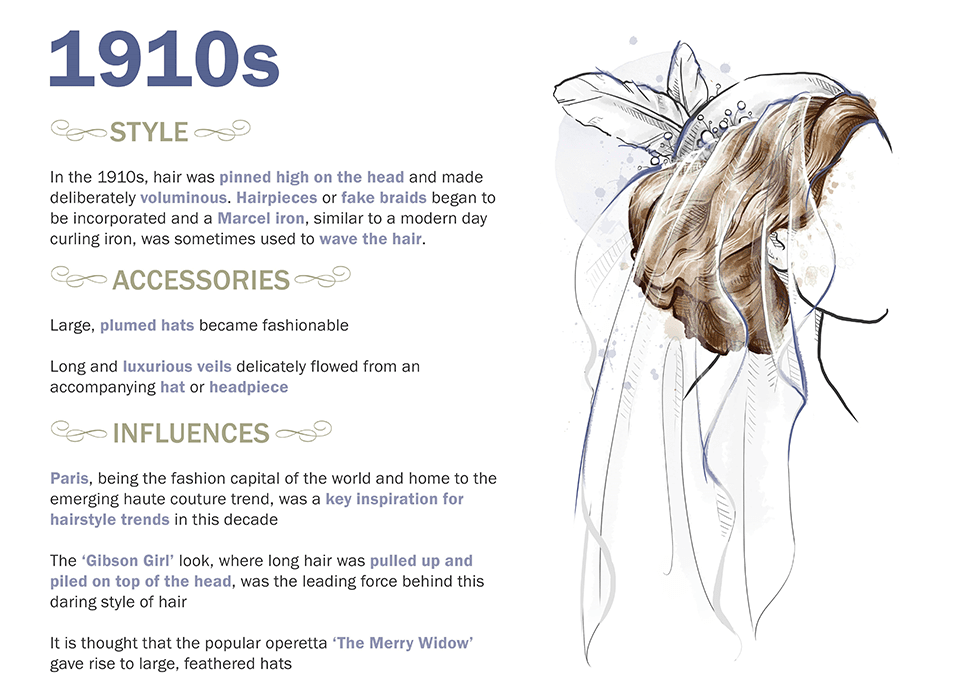
Wedding hair at the dawn of the 20th century involved piling hair high up on the head after curling it with a Marcel iron (the curling iron prototype, you guys). Influences included Parisian cool girls - which were a thing even in those days - and the "Gibson girl," which typified the ideal look of the late 19th and early 20th century woman. Hats and feathers were also widely popular. Here, Eleanor Roosevelt exemplifies the trend on her wedding day in 1905.
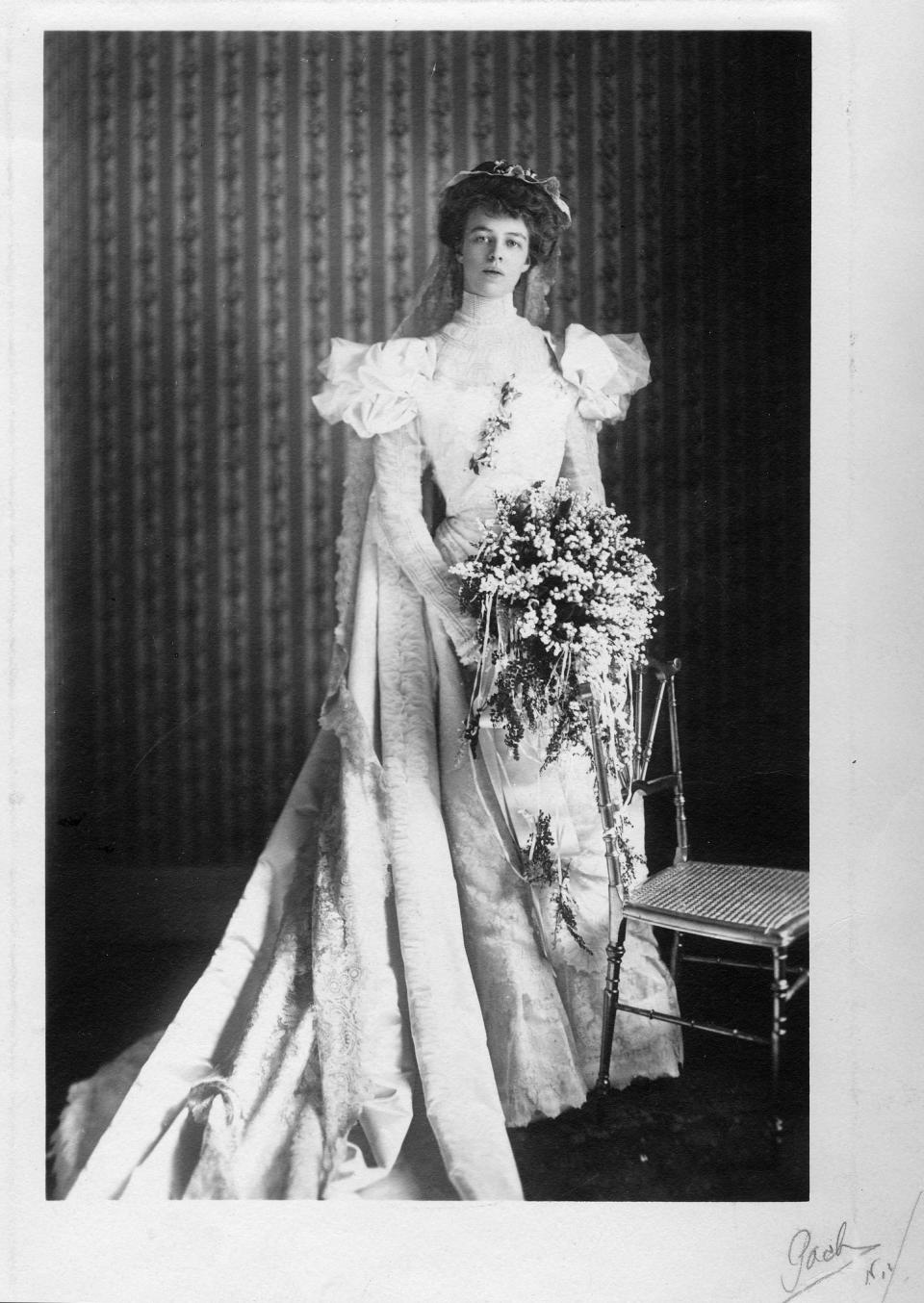
1920s
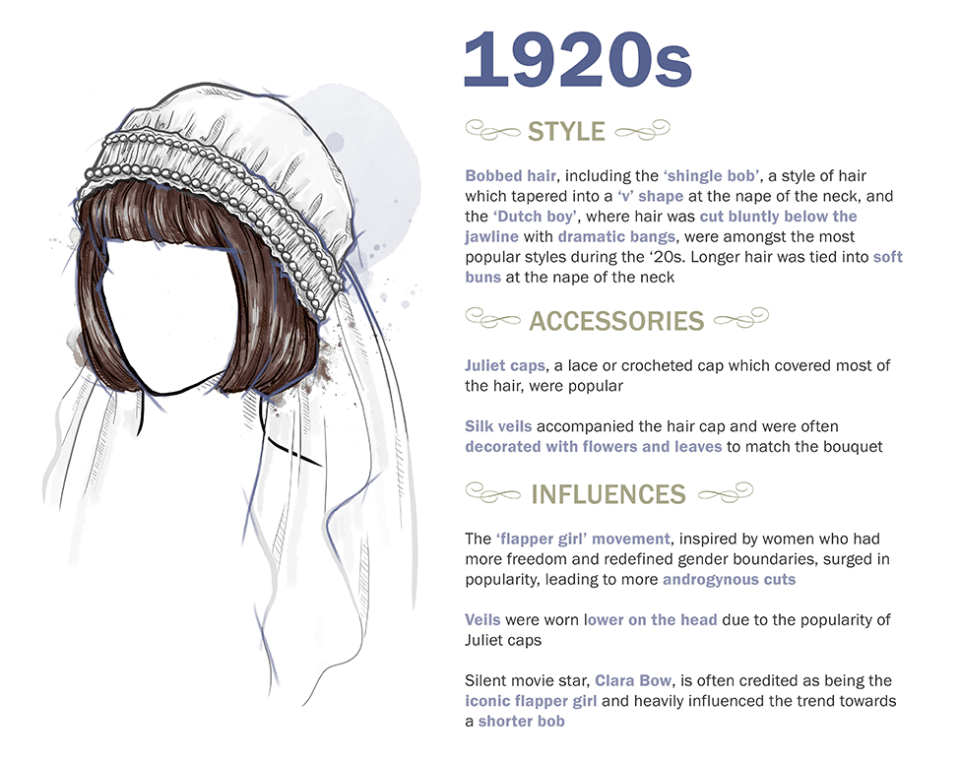
Obviously inspired by the Roaring '20s flappers, popular wedding hair styles evolved towards sleek angled bobs. Socialite Cornelia Vanderbilt, who married her husband John Cecil in 1924 wore her hair well above her shoulders, with a veil placed close to her forehead. Juliette caps, a lace or crochet covering that hid most of the brides hair, were popular as well - Lady Elizabeth Bowes-Lyon (later Queen Elizabeth, The Queen Mother) donned one while marrying King George VI (the current Queen's father) in 1923.

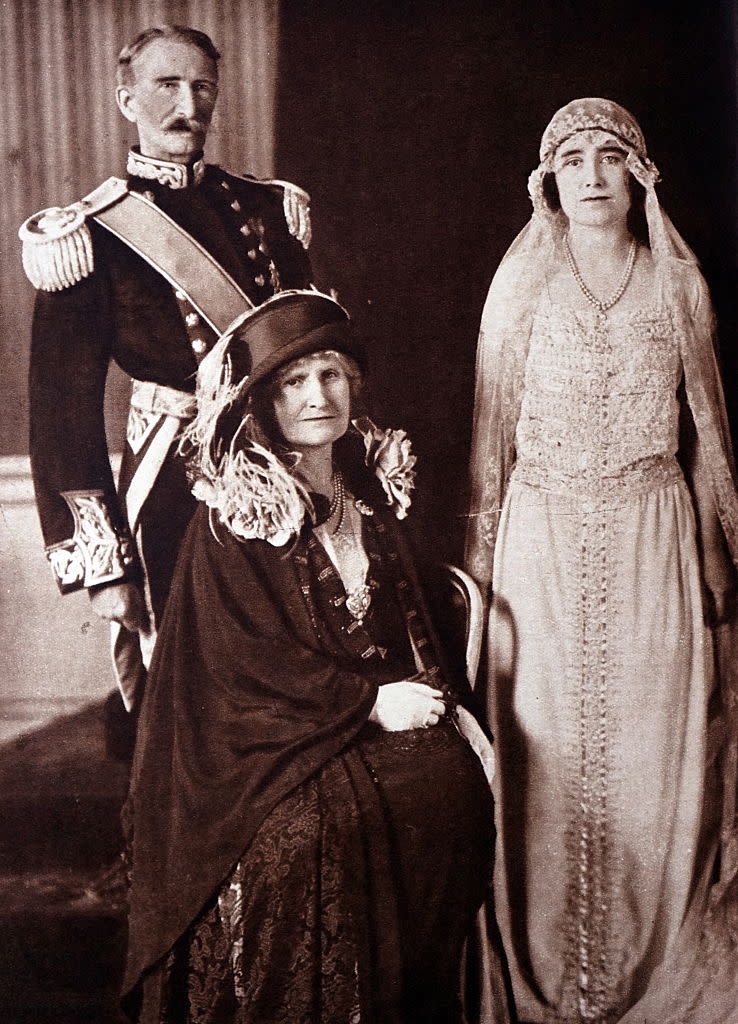
1930s
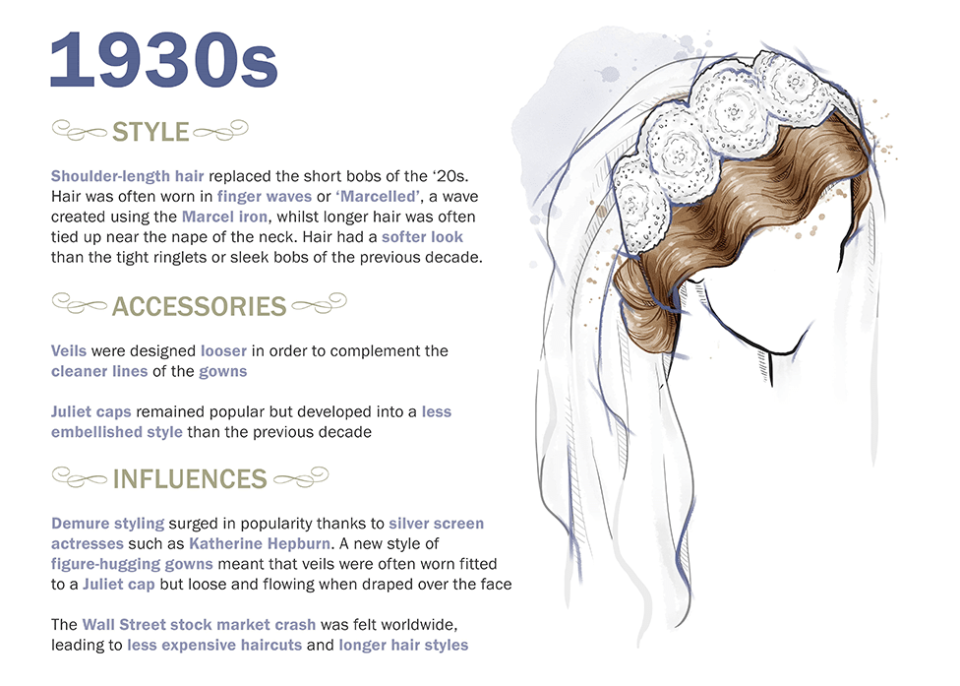
After the Wall Street Market Crash of 1929, women began to wear their hair longer - haircuts had become an expensive and impracticable luxury. Because of this, brides opted for longer, looser styles involving finger waves. Veils also became looser to match the new, cleaner lines of the gowns - which were popularized by onscreen actress Katherine Hepburn. Below, an unnamed 1930s bride is photographed wearing the loose, long finger waves of the period.
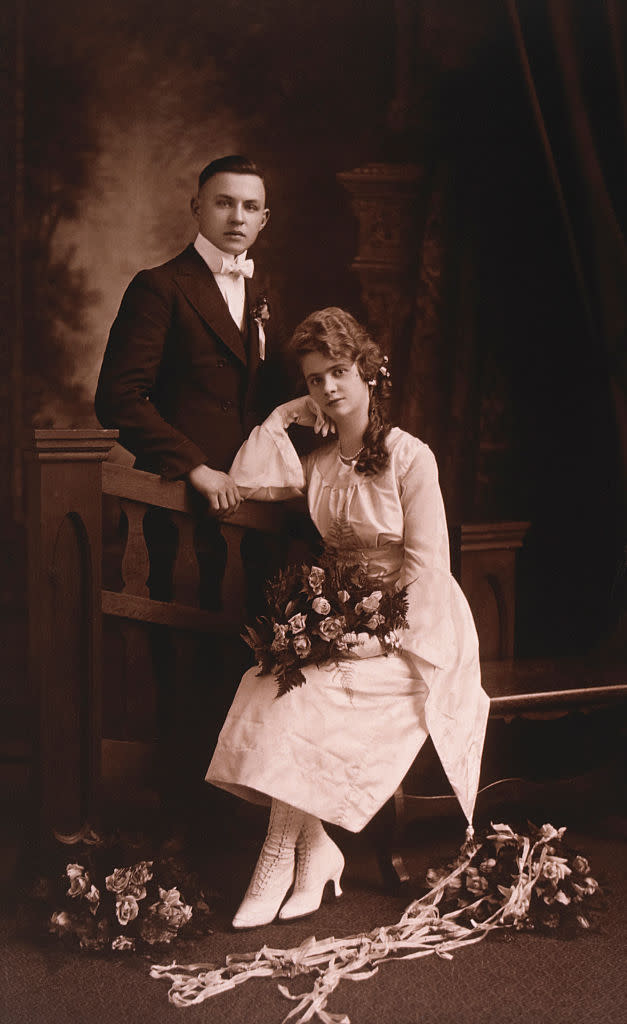
1940s

The era of World War II brought with it short, practical curls (women became workers while men were away at war) that carried over into bridal decor. The '40s were a time of austerity and cost-cutting - which is why, when the soon-to-be Queen Elizabeth wed Prince Philip in 1947, she was required to use ration coupons to buy the material for her gown. She wore her hair curled and pulled back (and did her own makeup) for the ceremony in Westminster Abbey. Similarly, when Marilyn Monroe, 16, married James Dougherty she wore her hair in Victory curls - she later went on to work in a factory to participate in the war effort while Dougherty was deployed.

1950s

Similar to the wedding curls of the 1940s, 1950 bridal hair refined the previous decade's trend. The invention of hairspray allowed for more defined styles - think fuller, lush curls. Skullcap veils (veils that hug the scalp) were also elements of this period's bridal hair. When Jackie Bouvier married John F. Kennedy in 1953, she modeled both the lush curls and skullcap veil that typified the decade - and was positively stunning.

1960s

Beehives and big hair defined the '60s street style and bridal hair trends. Bouffants, teased volume at the crown and front of the hair, also became popular. In (vertical) line with the hair, veils were worn as high up as possible on the head - Priscilla Presley exemplified this trend when she and the King of Rock 'n Roll tied the knot in 1967.
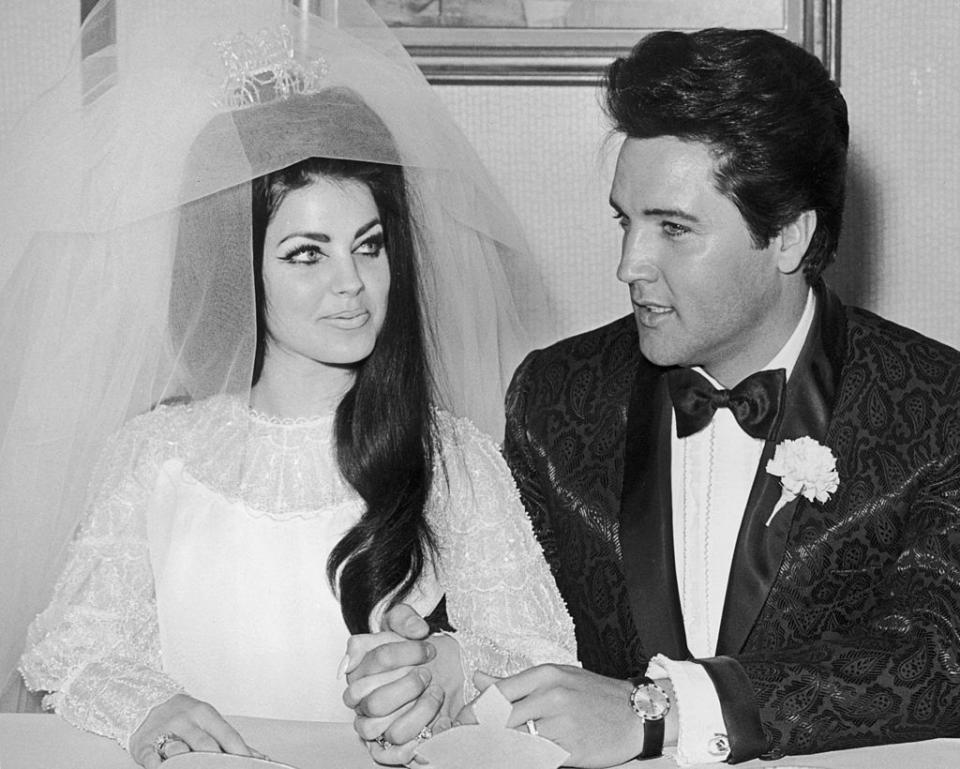
1970s
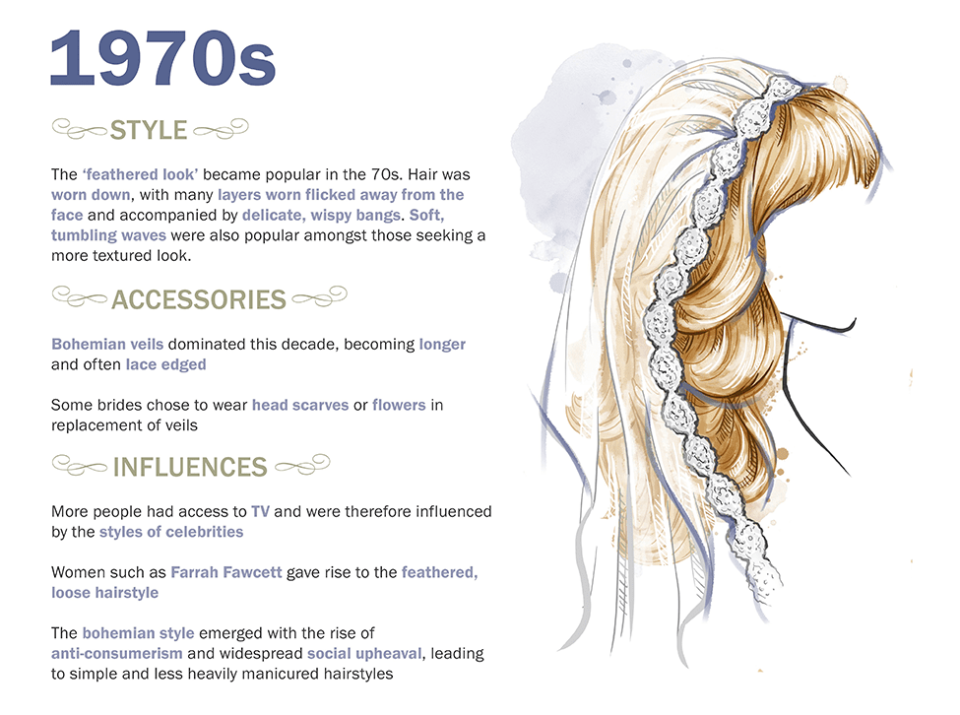
In the 1970s, it was all about letting your hair down - bohemian and hippie influences could be found in long, feathered wedding hair styles, inspired by Farrah Fawcett, and whimsical veils, which sometimes took the form of scarves or flower crowns. Fawcett, pictured here during her 1973 wedding to Lee Majors, sports the look that influenced so many other brides.

1980s
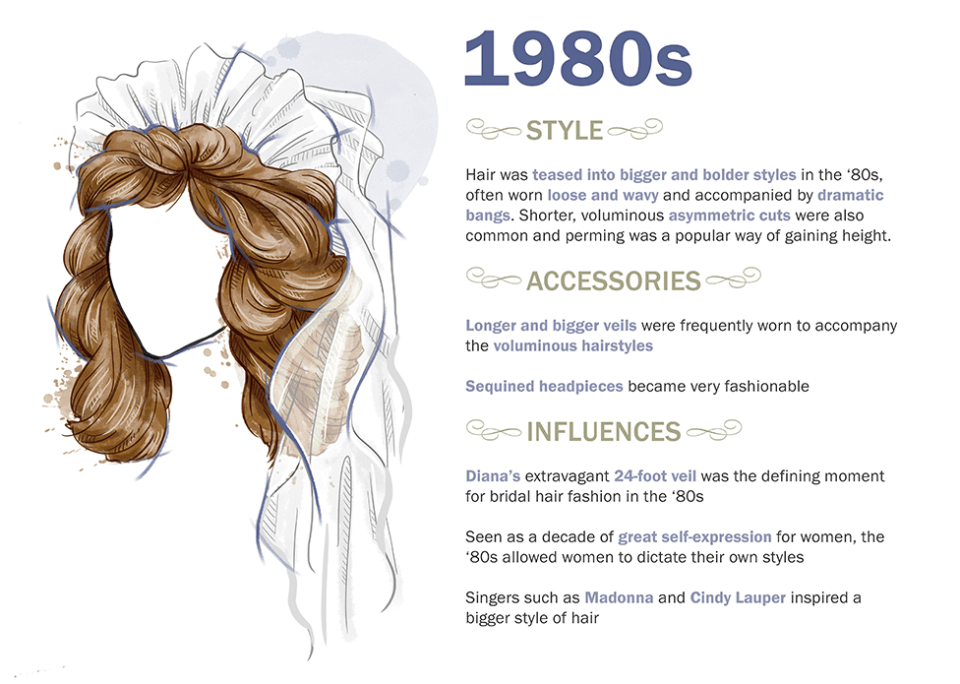
The 1980s were all about bangs - but mostly, they were about Princess Diana's bangs. Her dramatic wedding day fringe, paired with her gown's voluminous sleeves, made quite the statement. Her veil, while not as long as her 25 foot train, was also in line with '80s wedding trends - veils were bigger and longer than ever. Sequined headbands and headpieces also became prominent. Could that have anything to do with Princess Di's sparkling tiara, perhaps?
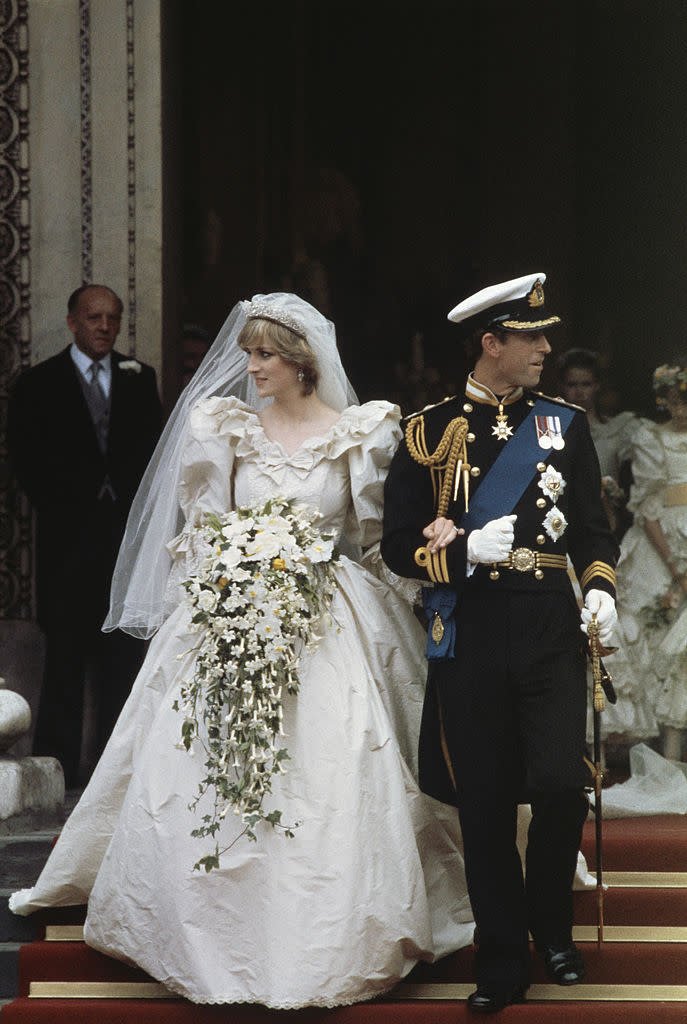
1990s
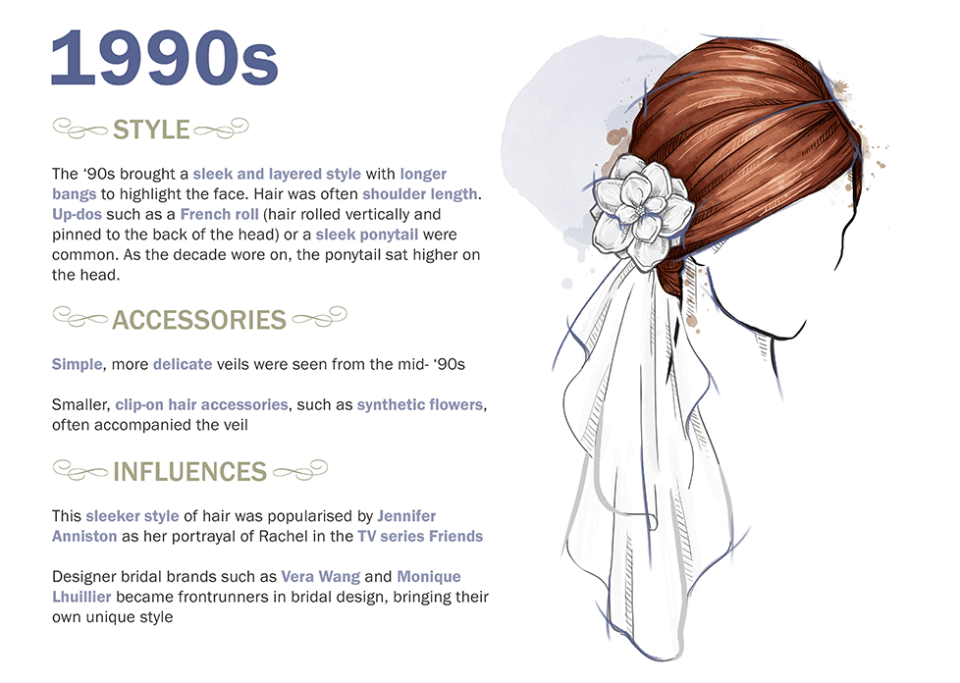
An unlikely (and fictional) character inspired the sleek, parted styles of the '90s: Rachel Green from Friends. French rolls and elevated ponytails - the sleeker the better - were the name of the wedding game. When Celine Dion wed longtime love René Angélil in 1994, she wore a seven pound tiara made of 20,000 Austrian crystals. And you best believe that her hair was as slick and sleek as it gets to have fit under it.
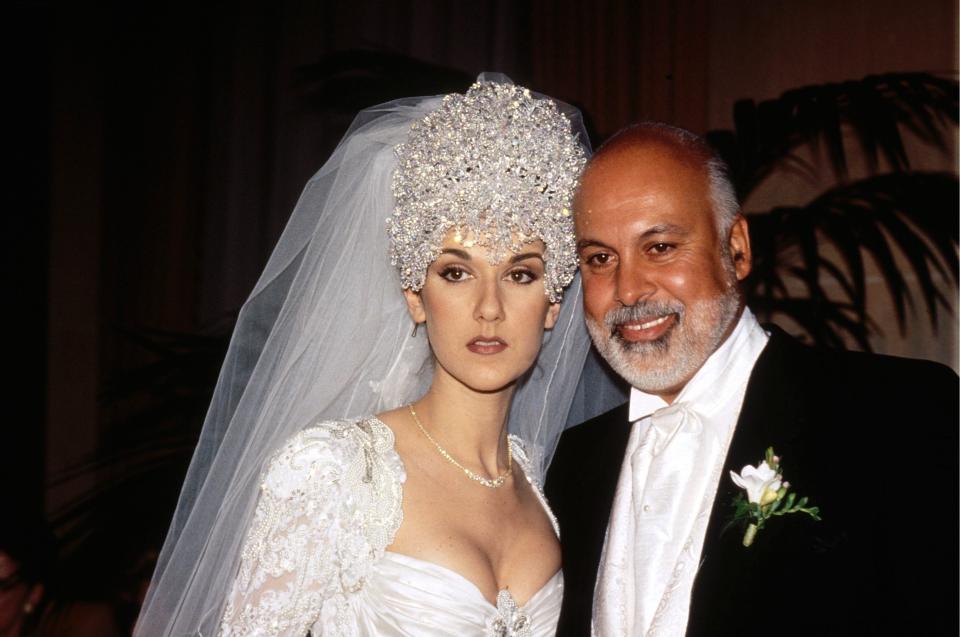
2000s
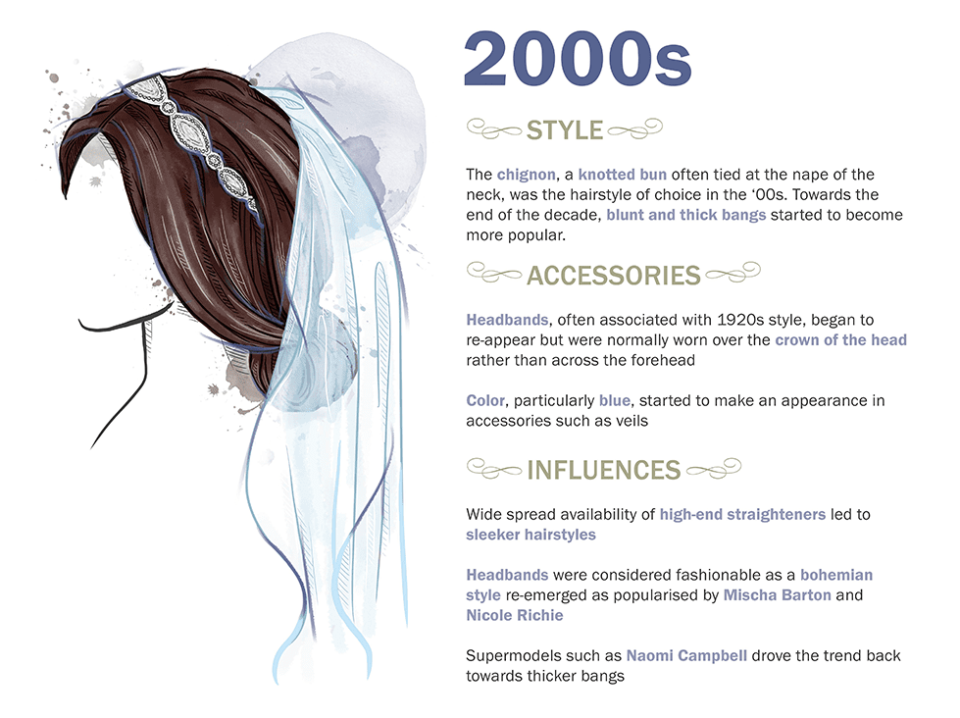
Chignons and low-knotted buns were at the forefront of new millennium bridal hair trends, partly due to the fact that straightening irons had become so widely available. While Gwen Stefani's pink ombré wedding dress was revolutionary, her hair, in fact, was pretty trendy. Despite the retro wave in front, Stefani's tight chignon was a 2000s wedding classic.
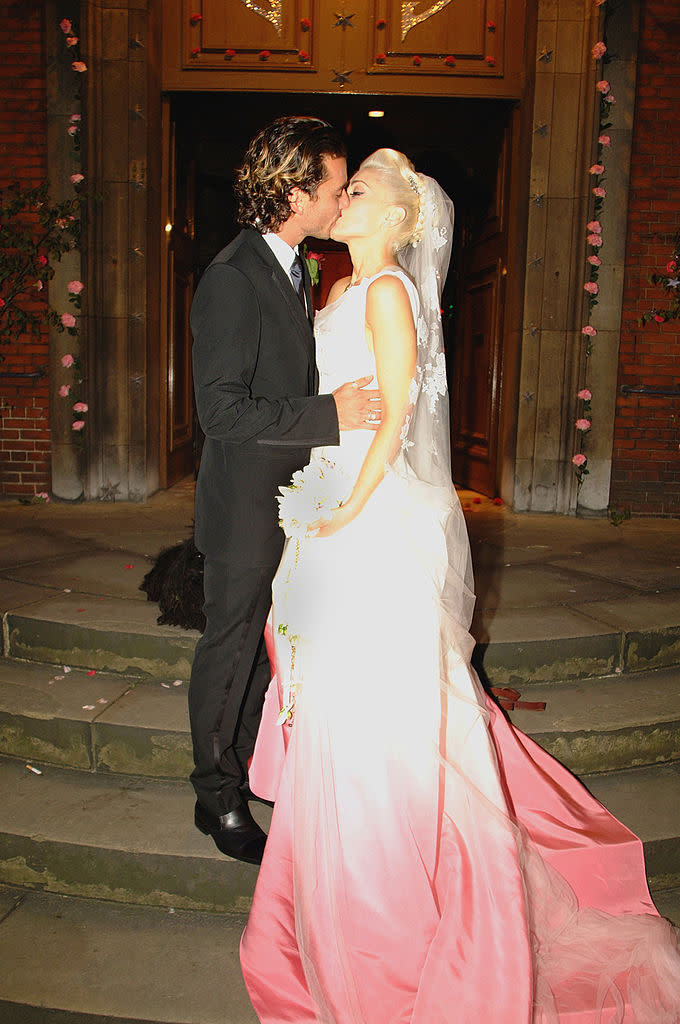
2010s
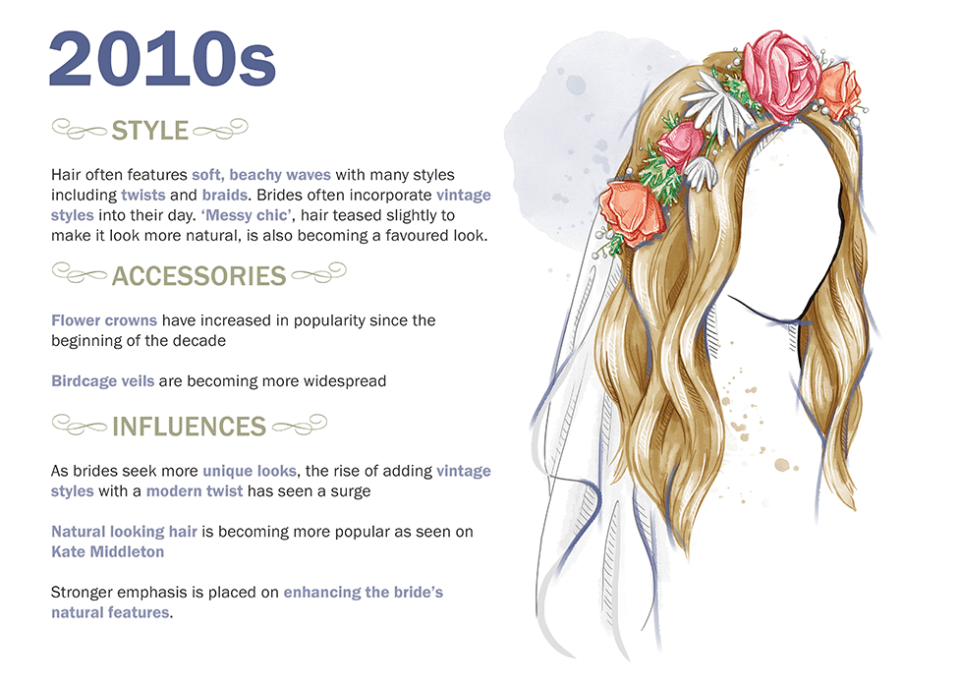
Ah, back to the present. You probably have a pretty solid understanding of today's wedding looks - mainly because Kate Middleton got married in 2011 and we still are not over it. Her classic but dreamy half-up half-down style, those perfect-but-natural curls... Brides have been emulating her for close to six years now. In addition to long, floaty styles, modern day brides enjoy floral headpieces atop natural-looking waves. When German Princess Maria Theresia of Thurn and Taxis married Hugo Wilson in 2014, she sported a quirky daisy headband under her veil.


[h/t Daily Mail]
You Might Also Like
